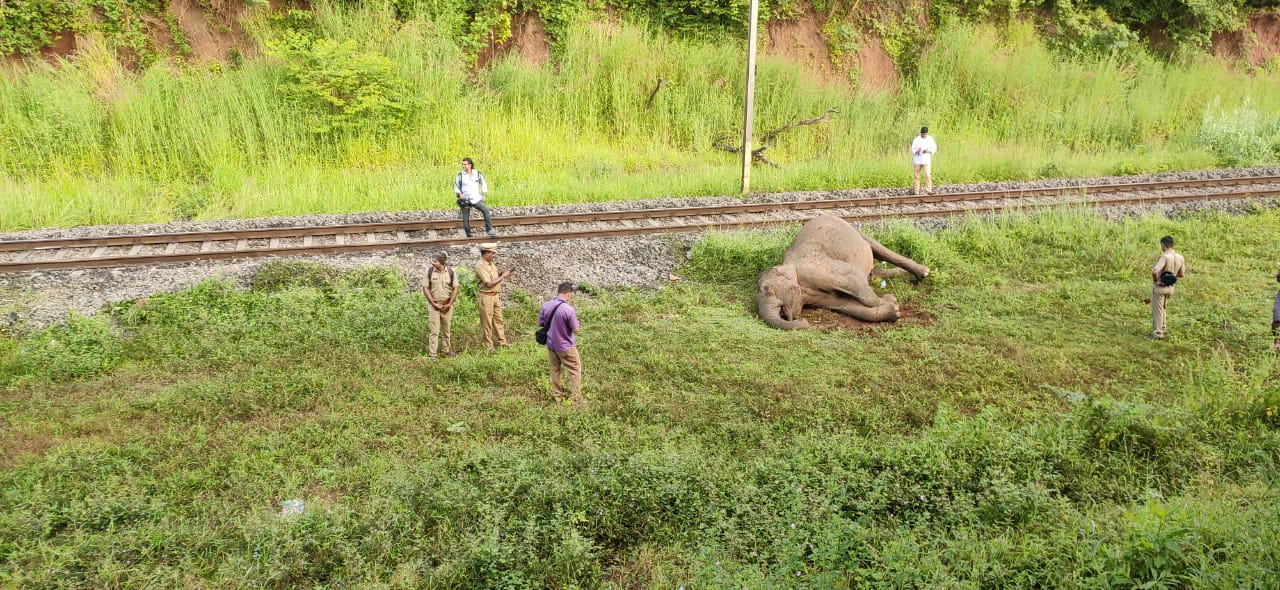The AI-based surveillance mechanism aims to prevent tragic collisions between trains and elephants in Madukkarai, Coimbatore, which is the pilot project.

An elephant killed on the railway track through the Walayar forest, Kerala. (Supplied)
Did you know that a total of 11 elephants, including young calves and juveniles, have been killed since 2008 on the railway tracks at the Madukkarai forest range in Coimbatore? This information comes from statistics provided by the Tamil Nadu Forest Department.
Deaths of elephants in this region will hopefully be a thing of the past, thanks to the Artificial Intelligence-based surveillance mechanism set up by the Forest Department on a pilot project basis.
The forest division has two railway tracks passing through the Solakarai forest beat and Bolampatti Block – I Reserved Forests. The presence of a water source at Walayar river is a key reason why elephants frequent the forest region adjoining the Kerala border.
After consulting with experts, the Tamil Nadu government implemented the AI-based autonomous surveillance system. Through this system, elephant movement in the proximity of railway tracks can be monitored 24×7.
Explaining the functionality of the system on X, Additional Chief Secretary, Environment, Climate Change & Forests, Supriya Sahu, said, “The surveillance system has 12 towers fitted with both thermal and normal cameras, installed at strategic locations along the railway track for early detection of animal movement.”
“We are trying our best to prevent these collisions through the use of modern technology, which can be a big boon in preventing elephant deaths in such areas,” Sahu said, posting a video.
The AI based surveillance mechanism set up by TN Forest Dept has started recording elephant movements on Railway tracks in pilot project mode in Madhukkarai at Coimbatore. The surveillance system has 12 towers fitted with both thermal and normal cameras, installed at strategic… pic.twitter.com/kfimcFZ2N3
— Supriya Sahu IAS (@supriyasahuias) November 1, 2023
The sensed data is automatically transferred to the control room set up on the site.
“The frontline staff of the Forest Department, along with a technical team, are available at the control room on shift basis to monitor animal movement and inform the locomotive pilots of the Railways through calls, SMSes, and alerts,” Supriya Sahu told South First.
“In addition to that, hooters and digital display alerts are also placed on the tracks for the loco pilots to see and act well in advance, in the event of any animal presence along the two tracks,” she added.
The AI-based surveillance system has been installed at strategic locations along the track, 500 m apart from each other, covering all the important elephant crossing areas, giving 150 m coverage on either side of the track for early detection of animal movement.
A total of ₹7.24 crore was spent to establish the technology at the 7-km-long vulnerable region of Madukkarai. The project is the brain child of Supriya Sahu, a Forest Department official told South First.
A study published in the National Library of Medicine about Elephant-Train Collisions (ETC) in Assam, India, stated that adult and calf elephant casualties on the railroads were found to be two to five-fold higher during the post-monsoon season compared to other seasons.
The temporal analysis indicated that ETCs spiked at certain hours and months, noted the study.
In 2022, Railway Minister Ashwini Vaishnaw, in a written reply to the Lok Sabha, revealed that 48 elephants were killed in train accidents during 2019-2022, while the total number of animals killed on railway tracks stood at 188.

May 01, 2024

May 01, 2024

May 01, 2024

May 01, 2024

May 01, 2024

Apr 30, 2024